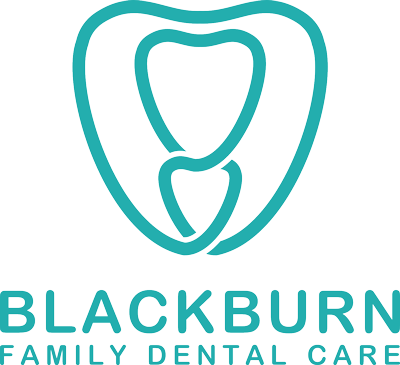Note: This article has been updated in April 2022.
If you have a chipped or cracked tooth that is slightly discoloured or decayed, there are several treatment options available to you, including crowns, veneers, and cosmetic dental bonding.
Dental bonding is the least expensive restorative dental procedure and can be done within a single appointment. Before you decide to have a cosmetic dental bonding procedure done, it is important to make sure you know what you’re getting yourself into. This will help determine whether dental bonding is the best option for you.
These are 7 important things to know about dental bonding.
1) Sometimes No Anesthesia is Required
Dental bonding is one of the simplest, fastest and least invasive dental procedures there is. In certain cases, anesthesia is not needed for cosmetic dental bonding depending on the extent of the chipping. Consult your dentist at your regular family dental clinic on the possibility of anaesthesia and whether it is a procedure that may need local anesthetics or if it can be done without.
2) Dental Bonding is Less Expensive
Dental bonding is a procedure that are well known to be significantly less expensive than crowns or veneers. This is often because dental bonding is done in-house by the dentist, whilst with a lot of other high end cosmetic work, the work is completed by a third party (a lab technician) and may require additional expenses for them to complete that task.
Rest assured with the advances of modern dentistry, the bonding materials have improved over the last 10 years, with better bonding systems and stronger white fillings available now. Blackburn Family Dental Care uses only modern day composites which have superior strength and aesthetic properties.
3) Dental Bonding is Covered by Insurance
In a lot of cases, dental bonding is usually covered by dental insurance as it may fall under general cover depending on your policy. It is especially likely to be covered if the dental bonding is required due to a decayed or cracked tooth. This is good news and a plus point for choosing dental bonding as most insurance policies do not broadly cover cosmetic dental procedures. Not only would you pay less to begin with compared to other procedures but with the benefit of insurance cover, you’ll end up paying even less for a dental bonding.
4) Bonding Is Less Durable
The modern-day resin composite materials used in dental bonding have improved significantly throughout the years but it still isn’t as strong and long-lasting as porcelain veneers and crowns. The material can be less durable and prone to chipping in comparison to lab-made products like veneers and crown/bridges. Most dental bonds last between 3 to 7 years, while crowns and veneers made of porcelain could last up to between 10 to 20 years.
5) Bonding Isn’t Effective on Severely Damaged or Decayed Teeth
If a crack or cavity on your tooth is too large, dental bonding may not be the best procedure to go with. Often cracks that are significant in size affect posterior teeth. With more forces required in posterior teeth, due to their main function as chewing teeth, strength is more important for these cases. Sometimes in large sizes and due to the large forces, bonding with composites may not be the best option since the strength of composites is relatively lower than metal or porcelains. In these cases, a crown or an onlay covering the whole tooth may be a better option, to help the tooth withstand forces and stress.
Bonding may also not be suitable in the case of certain teeth (for instance large molars) that have undergone root canal treatment. In root canal treated teeth, it may have significantly weakened structures, due to the structural loss which eventually caused the root canal, or even the root canal procedure itself. In such cases, full coverage onlays or crowns are the preferred method of restoration.
In the case of cosmetic bonding, it normally refers to bonding limited to the anterior teeth, that is the teeth that are visible when you smile. Front teeth have less load during mastication, and not all fractured front teeth may require a crown and bridge. Dental cosmetic bonding isn’t appropriate in every situation but it can be a quick and relatively inexpensive way to improve the appearance of your smile. It’s important to remember that feeling good about the appearance of your teeth can motivate you to maintain good dental health.
Dental bonding can also be a good solution for dental issues other than covering cracks, discolouration and decayed areas of a tooth. A dental bonding procedure could also help close any embarrassing gaps between teeth, elongate teeth, and enhance the appearance of a tooth by changing its shape and size.
6) Bonding can also help with sensitive teeth
In some cases, teeth can be extremely sensitive due to heavy pressure tooth brushing, gum disease, and even orthodontics. This is mainly because the above reasons cause an exposure of the tooth’s root which is intimately close to the tooth nerve. We always try conservative methods to reduce sensitivity, however in some cases this is not always possible. In cases where there is root sensitivity and also a loss of tooth structure due to abrasion (heavy tooth brushing), abfraction (clenching or grinding teeth), or acid erosion, bonding can be utilised to protect or cover the roots of the teeth, this in turn can reduce or eliminate sensitivity.
7) Bonding Isn’t Stain Resistant
Dental bonds can be used to improve tooth discolouration in some cases, but the resin used in dental bonding isn’t resistant to stains. Depending on how long the bonding is, resin may initially resist most stains but as it becomes more worn, the less effective it is at resisting stains on the tooth. Stains can typically creep underneath the junction of where the composite bonding meets the teeth, and because of the translucency of the resin materials in thinner sections, this may be visible and unsightly.
Due to cosmetic bonding for teeth being more susceptible to staining and chipping than other forms of cosmetic dentistry, special care is required to keep your bonded teeth looking natural. A good oral hygiene regiment is necessary to keep areas clean. Also, good oral health maintenance is paramount with 6 monthly recalls to ensure your dentist can monitor these stains. Sometimes a quick polish is all that is needed to eliminate those stains. Other times staining might be a beginning of something more serious like tooth decay. Another strategy to minimise staining is to reduce the cause of stains themselves; this can be from spices, coffee, tea, and red wine to name a few. If you’re a smoker, it’s a good idea to quit, as smoking also increases your risk of gum disease and oral cancer. To avoid chipping, be sure not to bite your nails or chew on hard objects such as ice, pencils and raw carrots. In some cases, a chipped restoration may be an underlying grinding issue, this can be discussed with your friendly dentist at your re-care appointments.
If you notice sharp edges or if your teeth feel strange when you bite down, be sure to see your dentist immediately. It may be necessary to get your dental bonds repaired or touched up.
Speak to Us at Blackburn Family Dental Care
At Blackburn Family Dental Care, our caring and gentle dentists are passionate about restoring your perfect smile. If you’re looking for exceptional cosmetic dental bonding services, get in touch today and find out more about what our professionals can do for you. Call to book an appointment to speak to one of our dentists in Blackburn, Box Hill, Burwood East, Forest Hill, Mitcham, Nunawading, Surrey Hills, Vermont, or Canterbury.

